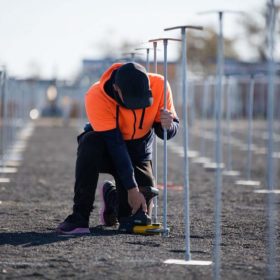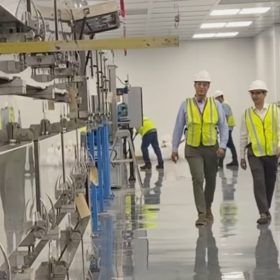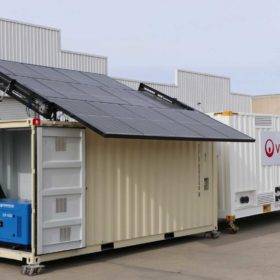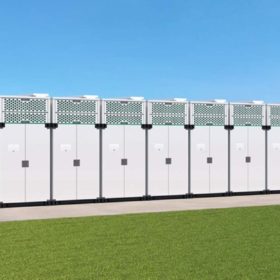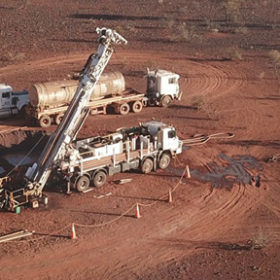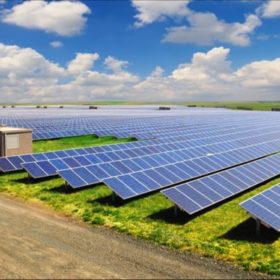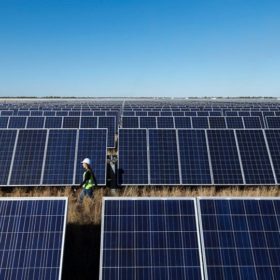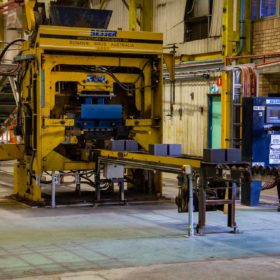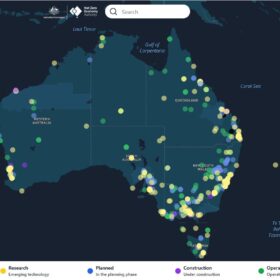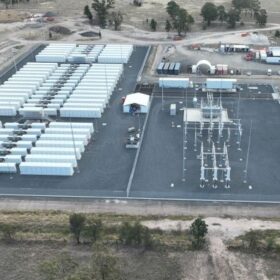Community solar and storage project wins NSW grant
Regional New South Wales will soon be home to a new solar PV and battery energy storage project with construction beginning on the community-owned Latitude Solar Farm being developed at Boggabilla in the state’s far north.
Weekend read: Hype and hope for solid-state batteries
Hype and hope for solid-state batteries (SSBs) continues to grow as industries from automotive to storage bet big on the technology. Leading battery manufacturers and a roll call of start-ups are jostling to get from lab to fab. The reality of SSBs is in question though. As Marija Maisch reports, the window of opportunity for the decades-old technology to make the next big step toward commercialisation is now.
Magnis Energy begins production at US battery ‘gigafactory’
Sydney-based lithium-ion battery specialist Magnis Energy Technologies has begun commercial production of full-sized cells at its manufacturing plant in the United States with plans to increase production to 38 GWh of battery cell capacity per year by the end of the decade.
The growing demand for off-grid leads to compact, pre-wired systems
With headlines dominated by spiking electricity prices and energy security, the demand for off grid solutions in Australia is booming. “It’s starting to make financial sense, that’s significant,” Matt Miller, the marketing manager for Victorian company Commodore tells pv magazine Australia.
Universal method to improve lifespan of lithium-ion batteries
Researchers at the Gwangju Institute of Science and Technology (GIST) have developed a broadly applicable and versatile post-electrode-engineering process. It can be applied to a range of conventional anodes to improve their stability.
US giant BlackRock commits $1 billion to big battery developments in Australia
The world’s largest asset manager, US company BlackRock, has acquired Victorian battery storage developer Akaysha Energy and its portfolio of nine projects in the national grid.
Weekend read: Flowing into the lithium supply gap
Australian-born vanadium redox flow technology and new homegrown electrolyte sources are set to bulk up renewable energy storage options in the Pacific region and plug the gap left by lithium supply-chain issues. Natalie Filatoff reports from Sydney.
Solar on radar as REP unveils large-scale project for southwest Queensland
Australian clean energy developer Renewable Energy Partners will investigate opportunities to incorporate solar PV and a big battery as part of its plan to develop a 600 MW wind farm in the Western Downs region of Queensland.
Origin acquires large-scale solar farm development project in NSW
The owner of Australia’s biggest coal-fired generator has added another large-scale solar PV project to its renewable energy portfolio with the acquisition of the 60 MW Yanco Solar Farm being developed in the New South Wales Riverina region.
MGA Thermal secures federal funding for energy storage project
Newcastle-based clean energy company MGA Thermal has secured federal government funding to develop a 5 MWh pilot plant to demonstrate the generation of steam from stored thermal energy with the capacity to provide a new form of medium-term energy storage.
